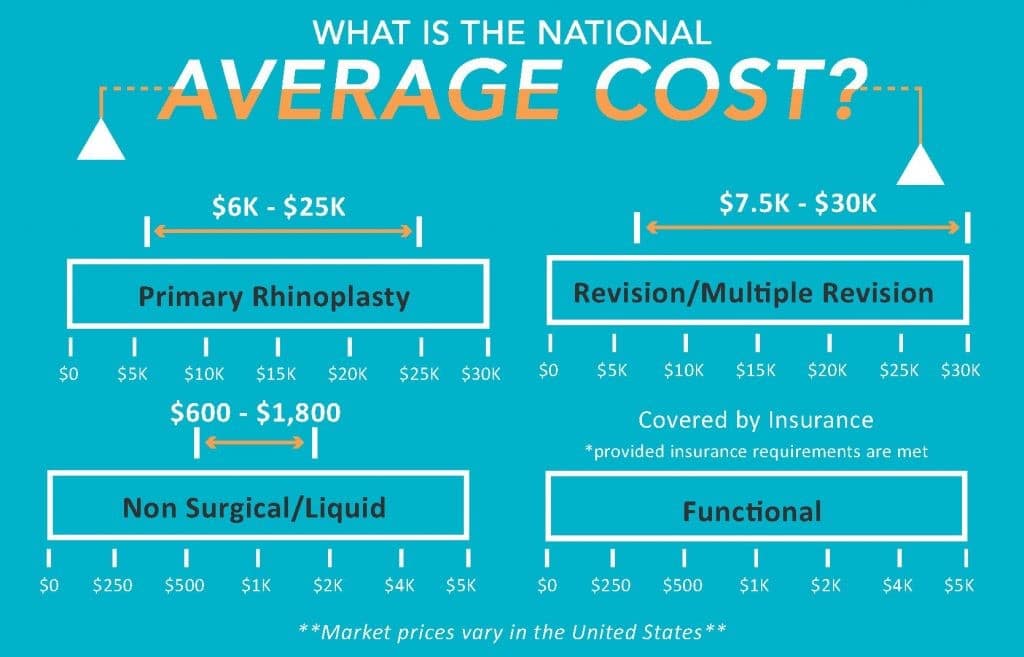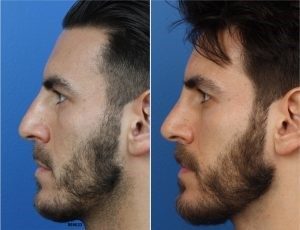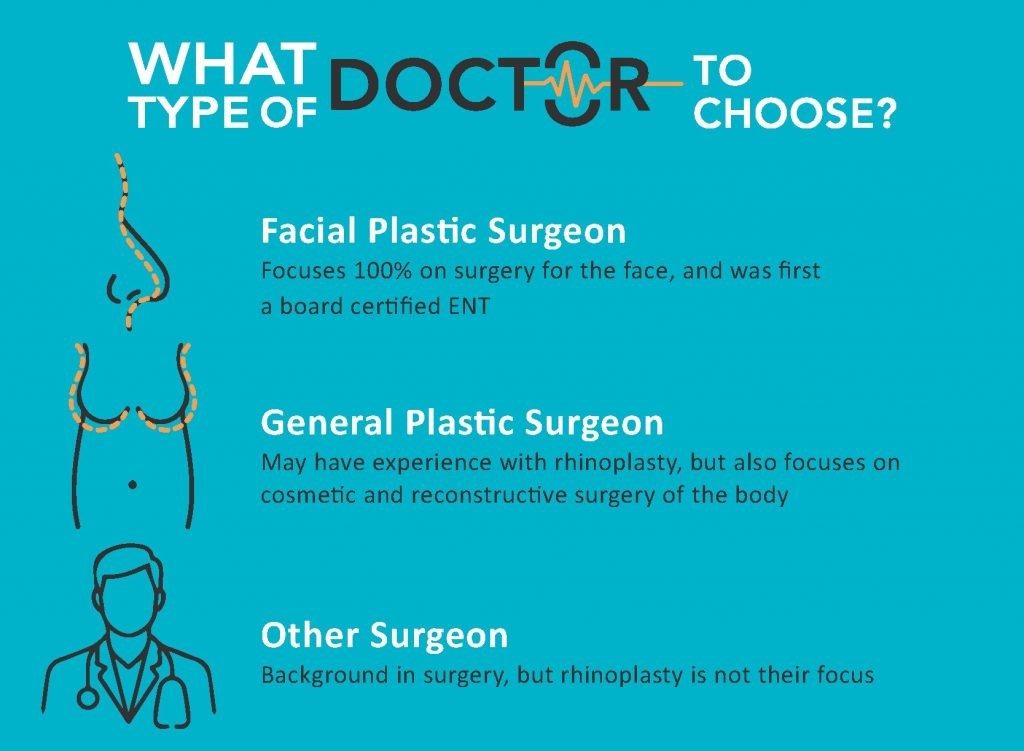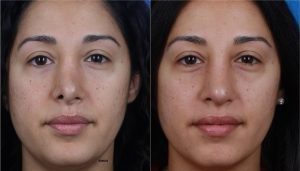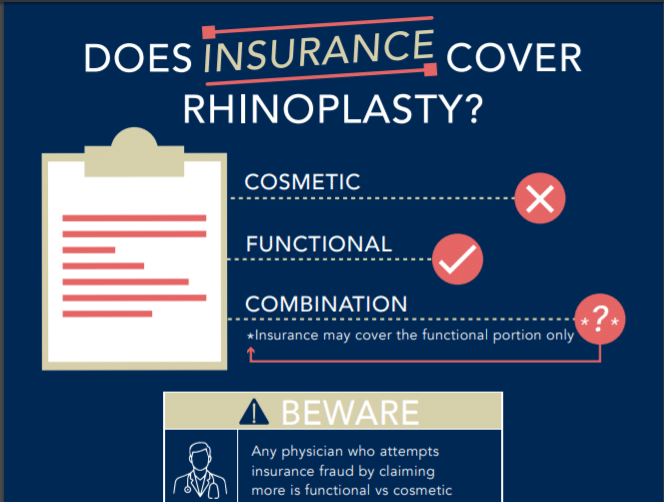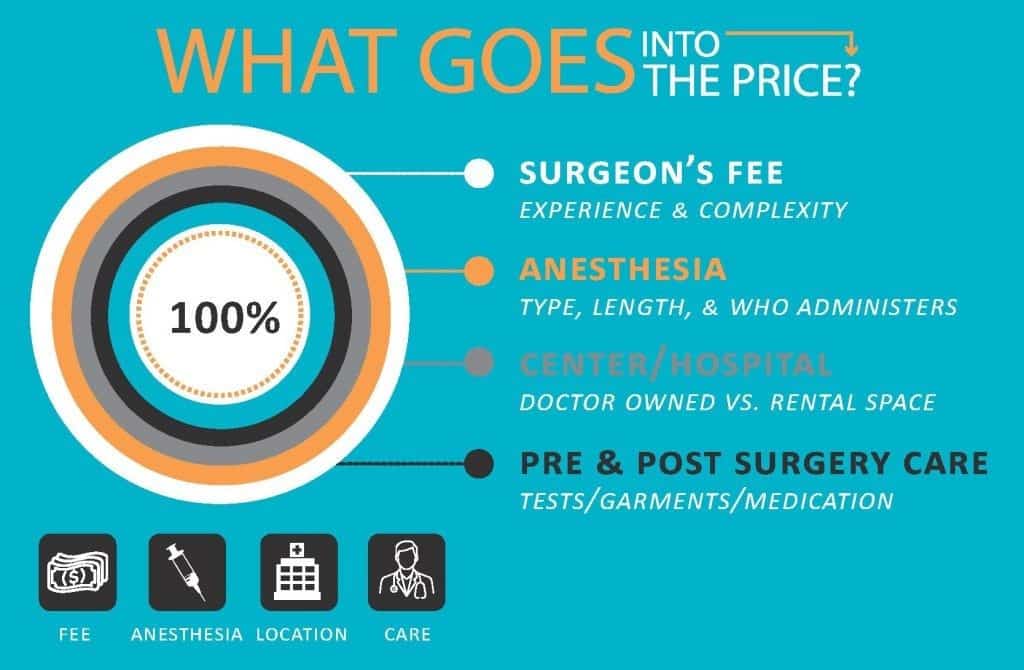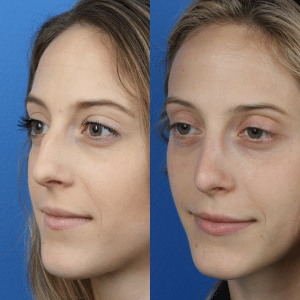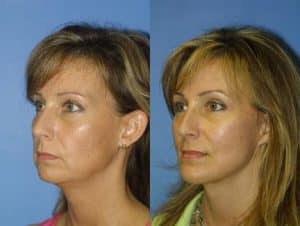What is the Cost of a Rhinoplasty?
You’re ready to reshape your nose and light up your face with an expertly performed rhinoplasty. You want to make sure you get a result that is both natural and beautiful. But you’re also concerned about the cost. Is it time to search through Groupon deals, or book a trip to another country for bargain-basement surgery?
Calculating the cost for nose reshaping gets even more complicated when you consider the numerous options that fall under the rhinoplasty category:
What procedure is right for you and what will you need to pay to get the right treatment for your needs and goals? Will insurance cover any of the costs? Is there a way to get the results you want and save money at the same time?
When a Bargain isn’t a Bargain
If you’re savvy about your finances, you already know that so-called “bargains” can ultimately cost more than quality goods. That’s especially true when it comes to rhinoplasty, which is one of the most complex cosmetic facial plastic surgeries performed today.
Because your nose is the central feature of your face, you can’t hide surgical mistakes or hope that no one notices them. You need to get it right the first time, to save yourself money and emotional distress. Keep in mind that the nose is also a vital organ and an essential part of your respiratory system. It is imperative that it still functions well after surgery. Only an expert can ensure the best result.
Choosing Your Rhinoplasty Surgeon
Philip J. Miller, MD, FACS is a double board-certified facial plastic surgeon in New York City who specializes in rhinoplasty. He has lectured on innovative rhinoplasty techniques at the International Symposium of Facial Plastic Surgery, written chapters on rhinoplasty for medical textbooks, and specializes in his patented NatraNose® approach to rhinoplasty procedures.
Cost of Rhinoplasty by Type
When estimating the cost of rhinoplasty, begin by determining which type of rhinoplasty procedure will meet your needs best. To help patients interested in rhinoplasty, Dr. Miller offers the following information:
Primary Rhinoplasty
Your first nose job is considered a primary rhinoplasty. The average price can range from $6,000 to $25,000, depending on your location and the expertise of your surgeon. You might also opt for tip plasty, which is less expensive, but only improves the look, angle or shape of the nasal tip.
The nose is a highly complex, finely sculpted structure that consists of a variety of tissue types, including skin, cartilage and bone. Lack of expertise working with any of these mediums can result in a nose that heals incorrectly and calls unwanted attention to itself. However, a beautifully executed rhinoplasty corrects defects in the size, shape and angle of your nose.
With an expert facial plastic surgeon such as Dr. Miller, you can expect aesthetic improvements such as:
- Shorter nose
- Straighter nose
- Removal of bumps
- More symmetrical nostrils
- Thinner or wider nostrils
- Thinner nose
- Larger nose
- More defined tip
- Nose proportionate to other facial features
Ideally, your primary rhinoplasty is so successful that after your one-year healing period, your new nose is everything you dreamed it would be. Your choice of surgeon is imperative to ensuring a positive result the first time around:
Unfortunately, if you choose the wrong surgeon for your primary rhinoplasty, you could need at least one revision and potentially more. In fact, up to 10% of patients who undergo rhinoplasty will seek out a revision.
Revision Rhinoplasty
A surgeon who is not board-certified as a facial plastic surgeon, or even a plastic surgeon who doesn’t specialize in rhinoplasty, can leave you with a nose that looks worse than your original nose. Revision surgery may cost between $7,500 to $30,000 to improve your initial results.
Keep in mind that it can take up to a full year to heal after rhinoplasty and determine whether a revision is necessary. Common reasons for needing a revision rhinoplasty include:
- Too much cartilage removed (collapsed nose)
- Over-rotated tip (pig-like nose)
- Difficulty breathing
- Drooping tip
- Crooked nose
- Asymmetric nostrils
- Nose doesn’t harmonize with facial features
- Nose is inappropriate for ethnicity or gender
If your surgeon botched your primary rhinoplasty, you could require multiple revision rhinoplasties to achieve the result you want. When the mistake is minor and you are comfortable returning to your original surgeon for revision, you may not be charged, or you could pay a reduced price. If you changed your mind about what you wanted, or if the mistake is so grave that you no longer trust your surgeon, you may have to pay substantially more for a new surgeon. That’s why seeking out a bargain for your first rhinoplasty isn’t a wise choice.
Revision rhinoplasty is even more challenging than the original procedure. Even a well-executed primary rhinoplasty creates scar tissue in your nose. A nose job that is poorly done could leave a significant amount of scar tissue, while creating structural problems that may be difficult to rectify.
If you need a revision rhinoplasty, it is imperative that you find a surgeon who specializes in this procedure. The quality of your cartilage, bone, and skin have already been compromised by your first surgeon. You now require expertise to compensate for that structural damage. Dr. Miller is an expert at correcting mistakes made by other surgeons to create the best outcome for you.
Nonsurgical rhinoplasty
Nonsurgical rhinoplasty costs about 10 times less than a surgical nose job. Charges range from $400 to about $1,800, depending on your location, the expertise of your surgeon, and the amount of filler that’s required to improve your nose. The best candidate for nonsurgical rhinoplasty is a man or woman who is happy with the length and shape of the nose but would like to address bumps or asymmetries. This procedure is accomplished with the aid of hyaluronic acid- based dermal fillers.
Dr. Miller also uses liquid rhinoplasty to reshape and reposition your nasal tip. Other than some soreness and swelling directly after the injections, you won’t have any recovery time or side effects from liquid rhinoplasty. You will also see immediate results and if you don’t like them, the filler can be dissolved.
Even though nonsurgical rhinoplasty is much less complex than rhinoplasty surgery, it still requires knowledge about facial anatomy, aesthetics, and harmony. Don’t trust your liquid rhinoplasty to an inexperienced provider. Select a board-certified doctor who is qualified the produce the best possible result for you.
If you’re nervous about rhinoplasty or you want to make some improvements to your nose while saving up for primary rhinoplasty surgery, nonsurgical rhinoplasty with dermal fillers is a great place to start. Many women and men opt for a nonsurgical nose job first, as a way of “auditioning” a potential new nose shape. Others are so happy with their results that they continue touching-up their nose with fillers, without ever moving to surgery. You will need to schedule touch-up procedures periodically to maintain the results of your liquid rhinoplasty. Surgery provides permanent results.
Septoplasty (functional nose job)
If you have a deviated septum, it means the nasal bone and cartilage that divide your nose in half is not straight. The septum can take up extra space in one of your nostrils, making it hard to breathe. Many women and men require a septoplasty to correct this problem. Since a deviated septum is a medical condition that impairs your ability to breathe easily through your nose, your septoplasty may be covered by your medical insurance:
When you combine rhinoplasty with septoplasty, only the portion of the operation that’s medically necessary is eligible for insurance coverage. Aesthetic improvements are not eligible for coverage or reimbursement. Never trust an unethical surgeon who tells you they are covered or try to manipulate the system to pay for your cosmetic surgery.
What you’re paying for
In addition to paying for the expertise and skill of your surgeon, rhinoplasty has several other expenses to consider when making a final decision based on price:
Your procedure may vary depending on how complex and difficult it is. Dr. Miller’s quotes are always all-inclusive, and include the following:
- Surgeon’s fee
- Anesthesiologist’s fee
- Anesthesia
- Surgical center
- Postsurgical care (follow up visits and tests)
- Medication-related to surgery
- Bandages and wraps
Dr. Miller has the advantage of his own surgical suite, which helps you avoid an expensive hospital stay. When consulting with other facial plastic surgeons who specialize in rhinoplasty, always ask for a complete breakdown of their price, so you won’t be surprised by add-ons in the end.
When considering the total cost of your rhinoplasty, remember to factor in the cost of recovery. You’ll need to take time off from work, and arrange for help with your house and kids. For additional information, please visit our rhinoplasty and nose job guide.
Contact Us for a Rhinoplasty Consultation
To set up a consultation with an expert in rhinoplasty that can give you the aesthetically pleasing, well-formed nose and the Aesthetic Confidence® it inspires, contact Dr. Miller in NYC today.
Next, here are 5 Tips for Rhinoplasty Recovery after an Operation
Stem Cell Facelift
The revolutionary use of stem cells in medicine is now being hailed as the latest breakthrough in the ongoing battle against the natural aging process. Stem cells are unique in that they are literally the tabular rasa, or blank slate, in cellular biology. They are known as “undifferentiated” cells, meaning they have the potential to be transformed into other types of cells – a liver or heart cell, or a skin cell – or regenerate old or damaged tissue.
This is why stem cells are frequently viewed as the body’s natural fountain of youth.
The Stem Cell Facelift is a new facial cosmetic procedure utilizing adult stem cells harvested through liposuction from a patient’s own fat tissue. The fat stem cells are then separated out and comingled with stem cell growth factors, which activate and energize the stem cells. The mixture is then injected by a qualified physician into specific areas of the patient’s face to restore lost facial volume and a youthful appearance.
The technique promises a complete facial rejuvenation, and a growing number of patients are looking into this less invasive procedure with much hope and anticipation.
The Stem Cell Facelift does indeed hold promise because of its efficient use of the body’s own rejuvenation potential to regrow or replace tissue that is lost as a result of normal aging. The use of stem cells has had remarkable results in the treatment of spinal cord injuries, for example.
The advantages associated with the use of stem cells in facial cosmetic procedures, however, should be weighed against any potential risks as the technology is still in its infancy. In one extreme case, a patient who had the procedure went back to her plastic surgeon with bone shards growing inside her eyelids.
Stem cell technology in cosmetic surgery is an exciting development that still has a long way to grow. One, therefore, should not overlook other non-invasive procedures with proven track records of success, such as Botox and injectable fillers used to remove facial lines and wrinkles, as well as time-tested surgical procedures like the traditional facelift.
Dr. Philip Miller is a board certified facial plastic surgeon with offices located at 60 East 56th, Third Floor, New York, N.Y. Call (646) 791-3025for a personal consultation.
Learn more about the different facelift alternatives.
Proper Post-Op Nutrition

Be Sure To Eat!
This may sound obvious, but don’t forget to eat. Depending on the location of your surgery, eating may become painful or inconvenient— while an impromptu diet may sound appealing, now is not the time to swear off food. Your body vitally requires nourishment when it is in a state of self-repair, and denying your system important nutrients could carry harmful consequences. If suffering from nausea, stick to simpler meals that are easier to keep down. If eating proves painful or uncomfortable but otherwise digestible, opt for calorically denser foods. If you can only handle ten bites per meal, make sure that your body is getting the most out of each bite.
Fiber
High-fiber foods help stabilize your digestive processes, and reduce the risk of constipation, a relatively common side effect of surgery. Popular foods include whole grain breads, fruit, vegetables, beans, and certain fiber-rich cereals. If concerned about constipation, avoid dehydrated or processed foods, dairy products, red meats, and sweets.
Protein
After surgery, muscle tissue is damaged and in need of repair. Adequate protein intake helps your system rebuild these body tissues. Vegetarians and vegans should seek protein through almonds, tofu, tempeh, and seitan. Those with carnivorous inclinations should avoid red meats due to saturated fat levels, instead opting for lean meats such as chicken, pork, and seafood.
Vitamin A
Adequate Vitamin A intake promotes epithelial and bone formation, as well as boosts general immune function. For high vitamin concentrations, try leafy greens such as kale and spinach. Other viable sources include yams, carrots, squash, and bell peppers. Vitamin A is fat soluble, meaning that it must be consumed with fat for optimal absorption, so considering preparing your cooked kale with a serving of extra virgin olive oil.
Vitamin C
Collagen regeneration is required to restore structural proteins in the skin, a vital element of recovery after facial surgery. In addition to boosting collagen formation, Vitamin C promotes immune function, and acts as a tissue antioxidant, blocking the harmful effects of free radicals in your system. The vitamin is water soluble and requires a continuous supply, as residual amounts of Vitamin C are expelled from the body in our urine. Vitamin C rich foods include citrus fruits, kiwi, mango, broccoli, and potatoes.
Drink Plenty of Water
Proper hydration is vitally important to daily nutrition, infinitely more so when recovering from surgery. Adequate water consumption flushes impurities (including surgery drugs) out of your system, stabilizes your metabolism, reduces joint pain, and helps combat fatigue. Leading up to your surgery date, increase your water consumption to 8-10 glasses of water per day, and gradually work your way back up to that intake rate after the procedure.
Consider Vitamin Supplements
For those concerned about adequate post-op nutrition, vitamin supplements are available and worth considering. Speak to a specialist to determine which, if any, supplements are right for you and your recovery plan. If you are taking any special medications, be sure to ask your doctor if any foods are off-limits while you recover.
For comprehensive post-surgery advice, including a nutritional consultation, book an appointment with Dr. Philip Miller. A recognized NYC facial plastic surgery specialist, Dr. Miller has been voted among the Best Doctors in America each year since 2007. His office, located at 60 East 56th Street in New York City, can be reached by phone at (646) 791-3025.
Next, find out Which Laser Treatment is Right for You
Is Your Selfie Addiction a Reason for Rhinoplasty?

Social media has changed so much about the world, and the rise in popularity of “selfie” photos has only added to those changes. A “selfie” is a photograph taken of yourself, by yourself, and usually involves striking a playful pose. Many young men and women are snapping selfies everywhere they go—with friends, in front of their favorite restaurant, and with random strangers if the occasion calls for it. All of these photos, it seems, have started to take a toll on young people’s self-images. In fact, some selfie habits are sending would-be patients straight to the nearest NYC plastic surgery clinic for rhinoplasty surgery.
What Makes Selfies So Different?
Photographs have been around for generations, causing a fair amount of angst for those who don’t like to have their pictures taken. When a person often avoids having pictures taken, this is an indicator of a typical amount of self-image trouble. Eventually, these people will put up with a few snapshots or group photos, even if they aren’t thrilled about the idea.
Social media connects us all in a much more visual way. Profile photos are required for most social networking sites, so there is a tremendous amount of pressure to take a really great picture to post. Then, of course, that picture must be updated again and again and again. Social media and selfie culture have shifted the focus of our interactions to a very visual level. Not only are young men and women aware that everyone is looking at photos of them all the time, but they themselves are taking and studying photos of themselves. Suddenly, those flaws seem magnified and the need for procedures, like nasal surgery, becomes more apparent.
Who Can Have Rhinoplasty Performed?
People seek rhinoplasty surgery to resolve many of their unwanted nasal features. Rhinoplasty is a procedure designed to change the size and shape of the nose in order to improve form without impeding function. Typical concerns that bring patients in for a nasal surgery include a nose that is too large or too small, a nose that is too flat or too pointy, a crooked nose, and nostrils that are too narrow or too wide.
Good candidates for the rhinoplasty procedure are in good physical health with realistic expectations about their potential results. Rhinoplasty can improve inherited characteristics like bumps or humps on the bridge of the nose, nasal deformities, or old injuries from a past nasal fracture. Other patients opt for rhinoplasty to improve asymmetry or a crooked appearance, to refine or narrow the tip, to adjust the projection of the tip, to reduce width of the nasal passages, to increase or decrease the overall size of the nose, or to reduce the size of the nostrils.
Are Self-Image Problems a Good Reason for Rhinoplasty?
Regardless of how you’ve come to think rhinoplasty might improve your self-image, learning more about this procedure can help you make an educated decision that is right for you. If looking at your album full of selfies uncovers a feature you’ve always disliked about yourself, your reason is no less valid than anyone else’s. The intensity of your dislike might be a bit heightened, due to the amount of photos you’re faced with daily, but it doesn’t change the fact that you don’t like your nose. If you think you might be a candidate for rhinoplasty, start with a one-on-one consultationwith a facial plastic surgeon.
During your consultation, the doctor will talk about the features you don’t like about your nose and what lead you to decide that rhinoplasty could be a good option. He will evaluate your physical health, your facial features, and your nasal features. The goal of any cosmetic rhinoplasty surgery is to create an improved nasal shape that is proportionate to the face. Your surgeon will be able to discuss the projected results of a rhinoplasty so you can get a real idea about how this surgery can help you.
Can Rhinoplasty Solve Self-Image Problems?
As mentioned already, good candidates for rhinoplasty have realistic expectations for their surgery. While surgical results can definitely help alleviate some of the strain on your self-image, they cannot provide an instant cure. Following surgery, you will need to give yourself time to adjust to your new nose and accept the way you look with these changes. A good self-image starts within, but sometimes making the right change to undesirable features can be a life-changing experience. If you’re unsure whether plastic surgery is the right answer for you, be sure to discuss these feelings openly with your plastic surgeon. He should be happy to work with you to give you a better understanding of the procedure, how it can change your look and your life, and what you should expect. Getting started with a consultation is the best way to decide if your selfie-inspired rhinoplasty is the right choice for you.
Where Can I Consult for a Rhinoplasty in New York?
If you want to get the bets rhinoplasty results for yourself, it’s important to choose the best surgeon possible. Dr. Philip Miller has specialized exclusively in facial plastic surgery, offering over 20 years of experience and knowledge to his patients. A recognized expert in rhinoplasty, Dr. Miller has been frequently invited to share his specific techniques with his peers at various national facial plastic surgery meetings. He has been voted among the Best Doctors in America each year since 2007 and has also been named a Top Doctor of New York. To schedule a consultation with Dr. Miller, contact his office located at 60 East 56th Street, Third Floor in New York City, by calling (646) 791-3025.
Pick the Perfect Time for Your Facelift
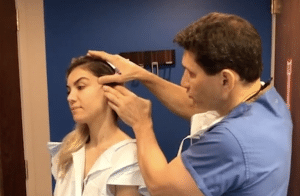
There’s a lot more that goes into planning a facelift surgery in New York than just picking a date for your procedure. In fact, as your plastic surgeon will discuss with you in detail, a key component to the process of having a facelift is your recovery period. While the surgery may only last a few hours, your recovery can take days and weeks. To benefit from the results you truly want from your facelift, you must plan ahead to book your procedure at the perfect time, a time when you have plenty of time to recover.
What Brings You In for a Facelift?
If you’re frustrated by the idea of missing work or being restricted from certain activities, it may be helpful to keep in mind the life-changing benefits this surgery will provide you. Facelifts are designed to help men and women of nearly any age achieve a more youthful look. This surgery can address drooping, sagging skin and other problems with the lower portion of the face. When the aging process and the effects of gravity form jowls at your jawline, a double chin, or deep folds you despise, a facelift surgery could help you to recover the contour of a more youthful jaw and chin. For many patients, a facelift can take years off their look.
Before booking your facelift consultation, you should be in good physical health without any illness that could impair your ability to heal. You should have an overall healthy lifestyle, eating a proper diet and getting regular exercise. There’s no correct age to receive a facelift procedure. Start planning your facelift if you believe you’re a good candidate for the procedure.
What Should You Expect from Surgery?
If it seems like the recovery period is excessive, it might benefit you to understand the facelift procedure itself. It may seem straightforward to you, but a facelift involves manipulating many delicate features of the face and jaw. Your surgeon will work on fine-tuning this area gently and effectively, leaving the skin, muscles, and tissue to heal themselves in their new formations. Rushing through the recovery process can only hurt your results or over-tax your body.
The facelift surgery can be performed as a traditional procedure or a limited procedure. With a traditional facelift, the incisions are made along the hairline and extending in front of and behind the ear, then continuing to the lower scalp. If your surgeon suggests a limited facelift, your incisions will be shorter in length and restricted to the area around the ear. The technique chosen for your procedure will depend on the extent of work that is required to achieve your desired results and the location of your main concerns.
With the incisions in place, your plastic surgeon will now work to lift and tighten the underlying sheet of facial tissues. Secondly, your surgeon will also redistribute the fat deposits that often accumulate throughout the lower face and neck before re-draping the skin to create a more taut but natural-looking appearance. The result of your successful facelift surgery is a refined, youthful profile that still appears natural, as if you have magically melted away the years overnight. Of course, it’s key to make it through your recovery period to reach these final results.
How Much Time Should I Plan for a Facelift Recovery?
We’re not talking about a year for recovery, or even six months. In fact, most patients recover from their facelifts enough to return to work within two weeks, can resume most activities within four weeks, and no longer have swelling after a few months. Your facelift recovery begins with bandages and dressings, as well as drainage tubes to remove excess fluids during the first day or two. The first 48 hours of your recovery will be dedicated to rest and recuperation, while keeping your head elevated to reduce swelling and changing the bandages to keep the incisions clean. Your plastic surgeon will prescribe pain medication to help with any discomfort and most likely will recommend using cold compresses to soothe the swelling and inflammation.
After five to 10 days, your surgeon will remove your sutures at a follow-up appointment and examine your incisions and surgery area to determine how well they are healing. At this stage, he may be able to give you a more definite time frame for returning to work and resuming activities like exercise. After continuing to care for themselves and their face for a few more days, most patients are cleared to return to work at two weeks after surgery. At this point, bruising and redness should be gone and only minimal swelling will remain. On your first day back on the job, you’ll look refreshed and youthful, but it won’t be obvious that you’ve had a facelift unless you spread the word yourself.
If you’re planning your facelift for a specific event, such as a wedding or class reunion, give yourself enough time in advance to come through the entire recovery process. Don’t schedule your facelift two weeks out; instead, give yourself two or three months if you can to fully heal and let all of the swelling subside. Picking the perfect time in advance can make your facelift experience seem much smoother and much less stressful.
Where Can I Get Help to Plan My Facelift?
There’s certainly no perfect time to have a facelift, but there will be a good time for you to undergo this life-changing procedure. If you’re unsure when the right time is for you, the plastic surgeon you choose should be able to walk you through all the details to pick your perfect time. One such plastic surgeon, Dr. Philip Miller, has specialized exclusively in facial plastic surgery in NYC, offering over 20 years of experience and knowledge to his patients. A recognized expert in facial rejuvenation procedures, Dr. Miller has been frequently invited to share his specific techniques with his peers at various national facial plastic surgery meetings. He has been voted among the Best Doctors in America each year since 2007 and has also been named a Top Doctor of New York. To schedule a consultation with Dr. Miller, contact his office located at 60 East 56th Street, Third Floor in New York City, by calling (646) 791-3025.
Five Things to Consider Before Your Rhinoplasty
Any plastic surgery can make lasting changes to your appearance, especially a rhinoplasty. Sometimes called a nose job, this surgical procedure can alter the features of your nose that you don’t like or that seem out of proportion with your face. While changing your unwanted nasal characteristics may seem like a dream come true, you should consider undergoing this surgery very seriously. As you make your decision, keep these questions in mind to be sure rhinoplasty in NYC is the right choice for you.
What Are the Concerns I Have About My Nose?
Obviously, it’s helpful to know what you would change about your nose before having rhinoplasty performed. Even if you don’t know exactly what you would like changed but have some vague notion that you simply don’t like your nose, a qualified plastic surgeon can help you develop a plan for surgery. Most patients who seek rhinoplasty have struggled with self-image problems related to their nose for a long time, maybe most of their lives. They are often unhappy with the size, shape, and/or structure of their nose and wish to make changes. Typical concerns leading patients to seek rhinoplasty include a nose that is too large, too small, too flat, too pointed, too crooked, too straight, too wide, too narrow, or too round.
The most common changes requested to the nose include the removal of a hump or bump; improvements to nasal asymmetry or crookedness; refining or narrowing the tip; adjusting the projection of the tip; reducing nasal width; increasing or decreasing the overall size of the nose; and reducing the size of the nostrils. In some cases, patients seek rhinoplasty because they have experienced trouble breathing from one or both sides of the nose. This could be an indication that there is an underlying problem with your nasal function, which can also be corrected with rhinoplasty. This surgery can change the shape of the whole nose, focus on one small part, or concentrate on the functionality of the nasal passageways. Whether you are looking to correct function or form, a rhinoplasty surgery could be the right procedure to address your concerns.
Do I Have Realistic Expectations About My Surgery?
Rhinoplasty is indeed a surgery, one that is very intricate and complex. Nasal surgeries are among the oldest plastic surgery procedures and the most difficult to perform. Before undergoing this surgery, or any surgery for that matter, it’s essential to know what to expect from your surgery. Your plastic surgeon will likely walk you through the surgery step by step during your rhinoplasty procedure, but it never hurts to make sure you’re prepared.
You may have either an open rhinoplasty or a closed rhinoplasty, depending on the extent and location of the changes required to achieve your desired results. A closed rhinoplasty, or endonasal rhinoplasty, begins with incisions made inside the nostrils only, leaving behind no visible scars. The skin is then lifted from the underlying cartilage and bone, allowing the surgeon to recontour and reconstruct the nose. To perform an open rhinoplasty, or external rhinoplasty, one very small incision is made between the nostrils on the underside of the nose. This incision allows the surgeon access to the tip of the nose, which can be opened to reveal the structures of the lower and middle third of the nose.
Once the desired changes are made to the nose, your incisions will be sutured and the nose will be bandaged. You will experience some bruising and swelling, but as these side effects subside, the results of your rhinoplasty will begin to emerge and your new nose will be revealed.
Do I Have Time for a Full Recovery?
An important consideration when you’re thinking about scheduling a rhinoplasty is the time it will take you to recover. You don’t want to book your surgery the week before a vacation, for example, or during a week that you can’t miss an important meeting at work. Your post-operative care will require some time off from work, some restrictions from your regular activities, and a little bit of rest and recuperation.
Following your surgery, you will experience only a small amount of pain and discomfort. Your nose will stay swollen for several days, sometimes causing breathing difficulties at first. Most patients also experience some swelling around the eyes for a few weeks following surgery. While your face and nose are healing after surgery, you will be instructed to take several precautions. Activities like bending and lifting can prolong your swelling, so these should be avoided for three weeks after surgery, along with running, cycling, and aerobics. You should avoid contact sports for six weeks to give the bones enough time to fully heal.
When you book your rhinoplasty procedure, be sure to take into account these various restrictions and the time you will need to be away from work and your daily activities. Planning your recovery is an essential piece of preparing for a surgery, so make sure to follow your surgeon’s instructions in total.
Am I Really Ready to Look Different?
Many patients go into their surgery without considering the fact that they will look different afterwards and it may take some getting used to. Even if your nose is reshaped exactly the way you wanted it, you might not be prepared for the shock of seeing it on your face for the first time. You’ll adjust to this significant change, of course, but it can take some time.
If you’re worried about the shock of that huge change, discuss this with your plastic surgeon. He should be able to provide you with images or projections of the way your nose will look after surgery. Some surgeons might be able to show photos of past patients with similar nasal structures to yours to help you start imagining your new look. To quell your anxieties, try visualization to emotionally prepare yourself for the new way you’ll look. Chances are very good that you’re going to love it.
How Experienced Is Your New York Surgeon?
The success of your rhinoplasty hinges on the plastic surgeon you select to perform the procedure. Choosing an experienced, credentialed plastic surgeon can minimize your risk of side effects and complications, as well as increase your chances for a successful result. If you’re in the process of selection a surgeon, ask or find the answers to these questions to ensure he is the quality surgeon you need and deserve:
Next, these are The Top 3 Reasons for a Revision Rhinoplasty
Top Three Reasons for Revision Rhinoplasty
Although rhinoplasty is one of the most complex and delicate plastic surgeries, it still carries a high success rate, leaving many patients satisfied with their improved nose. Unfortunately, not every rhinoplasty is deemed successful by the patient, leading some to seek a second, or revision, rhinoplasty. Sometimes, it’s just disappointment that leads to a revision rhinoplasty, but there are other reasons that might cause a second stop at the plastic surgeon’s office, such as Dr. Philip Miller’s New York plastic surgery clinic.
Reason #1: A Disappointing Result
Many of the patients seeking revision rhinoplasty do so because they do not feel that their surgical results met the expectations they had prior to surgery. Disappointing results can occur when surgeons use outdated or ineffective techniques, when problems arise during the surgery or healing process, or because a patient and surgeon had a miscommunication about what was expected. Some patients may have an idea in mind that isn’t practical; other times the surgeon might have left a nose too pointy or too narrow, leading the patient wanting more.
If a patient had a strong trust in their first rhinoplasty surgeon, he or she might return for a second procedure, but this is less likely. Typically, after an unsatisfactory nasal surgery, most revision patients are keen to find a revision rhinoplasty specialist to perform their secondary rhinoplasty. Finding a second plastic surgeon, preferably one who specializes in revision rhinoplasty, should involve doing thorough research, asking many questions, and talking specifically about the expectations not met during the first surgery and the desires you have for a second surgery.
Reason #2: A Post-Surgical Complication
Rhinoplasty is a highly complex surgical procedure, requiring the surgeon to have the utmost level of skill and a close attention to detail. Because the appearance and functionality of the nose are so closely connected, every move the surgeon makes must be exactly right. For example, when the size and shape of the nose are altered, it can easily disrupt the patient’s ability to breathe properly. On the other hand, a rhinoplasty performed to improve breathing might affect the way the nose appears.
Some of the post-surgical complications that can occur include a change in nasal function such as trouble breathing, a bump or depression that forms after surgery, and an excess of scar tissue growth during the healing process. Although it is rare, more serious complications can follow rhinoplasty, such as a deviated septum or nasal valve collapse. Working with a board certified and experienced plastic surgeon to resolve these issues can prevent further damage and complications.
When a first rhinoplasty results in unwanted changes which affect the functionality of the nose, a revision surgery is almost always necessary to correct these errors. Whether due to outdated techniques, a miscalculation, or an unforeseen complication, post-operative problems involving the function of the nose may need to be addressed right away. Many patients in this situation are willing to work with the same surgeon to correct the issue, because it is not always the result of poor training or a lack of expertise. Sometimes, as with any surgery, the risks involved with rhinoplasty may become real. The importance of working with a plastic surgeon with proven credentials, a reputation for success, and the most up-to-date techniques cannot be stated enough.
Reason #3: An Unexpected Visit
For some patients, returning for a second rhinoplasty has absolutely nothing to do with their first surgery or the outcome. Sometimes, injuries and accidents can ruin the beautiful nose that was hand-crafted for you by a skilled plastic surgeon. Your first rhinoplasty does nothing to protect your nose; it will still be as naturally vulnerable as ever before. Just as many patients find themselves having a first rhinoplasty to repair nasal damage, so too can patients wind up back in the office for a second rhinoplasty. Other patients may find that years after their initial successful rhinoplasty, aging has created unwanted to changes to the nose, just as it can to an un-operated nose.
What makes this surgery a revision, especially if it’s months or years after the first one? The simple fact that you have had a previous surgery may change the surgeon’s approach to your nasal repair strategy. The nose is a delicate place to operate, so your surgeon must have a complete understanding of yours in order to keep it looking and working great at the same time. And on a technical level, he really will be revising that surgery you had all that time ago. With this in mind, make sure to locate a skilled facial plastic surgeon with experience performing revision rhinoplasty before you schedule your own surgery. To learn more about rhinoplasty, visit medlineplus.gov.
Where to Go for First- and Second-Time Rhinoplasty
Whether you’re looking for a revision rhinoplasty or this is your first time around, it is equally important to carefully select the plastic surgeon to perform your surgery. Make sure you choose only the very best revision rhinoplasty surgeon for your surgery. Dr. Philip Miller has specialized exclusively in facial plastic surgery, offering over 20 years of experience and knowledge to his patients. A recognized expert in rhinoplasty, Dr. Miller has been frequently invited to share his specific techniques with his peers at various national facial plastic surgery meetings. He has been voted among the Best Doctors in America each year since 2007 and has also been named a Top Doctor of New York. To schedule a consultation with Dr. Miller, contact his office located at 60 East 56th Street, Third Floor in New York City, by calling (646) 791-3025.
Could a Facelift Save Your Job?

Prospective patients seeking facelift surgery in New York often do so for their own personal reasons: looking younger, feeling good about themselves, improving their profile. However, they may be facing much larger concerns than just how they look. For some men and women, a facelift can have huge implications in their personal life and even their careers. Are patients really seeking facelift surgery to save their jobs? And does it really make a difference?
Motivating Factors for the Facelift
A facelift surgery is a procedure designed to add definition and improved contour to the lower portion of the face, primarily the jawline, chin, and upper portion of the neck. Many men and women opt for facelift surgery because they have begun to experience the effects of aging on this area. Candidates for facelift may experience loosening of the face on the skin and neck, sagging skin in this area, a collection of fat deposits at the jawline, the gradual formation of wrinkles throughout the face, jowls at the jawline, and/or extra folds at the front of the neck to create a double chin. The loss of elasticity in skin and the effects of gravity combine for a less balanced look than the V-shaped face of youth.
Typically, men and women who opt for plastic surgery to rejuvenate the face want to improve their appearance by reversing some of the effects of aging. Some motivating factors include increased self-esteem and self-confidence, the desire to recapture youth, a fresh new start in life, and just wanting to look like themselves again. Facelift surgery can tighten the skin in the lower third of the face, redistribute fat deposits to places in the face that have lost volume, and remove excess fat and skin that is not needed. Doing so can help patients to achieve their personal goals through facelift. Prospective patients should be in overall good health, not smoke, and have realistic goals achievable through facelift surgery.
Opting for the Career-Saving Facelift
For some patients, those realistic, personal goals can turn into something more career-oriented. Today’s job climate is challenging, with many new graduates entering the workforce every year and older, more mature workers facing the threat of replacement. The economy in the United States has put pressure on companies to retain only essential personnel and to do so at the lowest cost possible, leaving many higher-earning and more experienced workers without their jobs. One typical practice companies have been using in recent years is to cut out middle-aged workers for less expensive personnel who can be easily trained in specific areas. In other situations, workers keep their jobs but are constantly passed over for promotions that are going to younger workers; there’s no way to get ahead in their careers anymore. Other older workers may be finding themselves jobless and newly on the job hunt. It’s an ugly truth, but it has increased the need of many of these aging workers to take drastic steps to maintain a successful career.
While a facelift can’t boost your technology skills or suddenly reform you into a better public speaker, it can offer many profound benefits to its patients. When men and women seek facelift surgery for their careers, they are often doing it for two reasons: 1.) To appear younger and maybe not attract notice as part of that aging workforce; and 2.) to boost their own confidence, thus improving work performance. As companies begin to deal with cases of age discrimination and handing out pink slips to those too young for retirement, some workers are choosing to do all they can to fire-proof themselves in any way they can.
Of course, there is no guarantee that workers who have a facelift won’t get fired. Yet, even if you are let go, the surgery can help you in the long run. Like middle-aged employees, middle-aged job seekers sometimes opt for facelifts as a strategy to break into a new corporate workplace, perhaps looking as young and vibrant as they did years ago. Even if your company doesn’t retain you because of that newly redefined jawline, there is no end to where your new self-confidence might take you.
Facelift Surgery & Recovery
If you’re considering a facelift for personal or professional reasons, you’ll want to plan your schedule accordingly. Use sick time or vacation days to give yourself enough time for the surgery and recovery period, so you can return to work refreshed and renewed. You might even have coworkers scratching their heads to figure out what’s so new and different about you.
The traditional facelift surgery is performed using incisions made at the hairline and extending in front of and behind each ear, then continuing down to the lower scalp. Some patients may have the option for a limited facelift surgery, which uses shorter incisions made just around the ear. The technique used for your surgery will be determined during a one-on-one consultation with your plastic surgeon, after you have discussed your desires from surgery and he has analyzed the features and concerns of your face. Once the incisions are in place, your surgeon will lift and tighten the underlying sheet of facial tissue in order to re-drape the skin; he will then redistribute the fat collected in the lower face and neck to restore volume to areas like the cheeks and mid-face. With everything in place, the incisions are sutured closed and you’re left with a more refined, more youthful profile.
Allow yourself the time necessary to recover before returning to work or getting back to the job search. Your plastic surgeon will go over the timeline for your projected recovery, but plan to take at least one to two weeks off. After your surgery, any drainage tubes and dressings will be removed within one to two days. Your sutures will be removed around five to 10 days after surgery. During this time, you will experience some swelling of the face and mild to moderate discomfort which can be managed with cold compresses and prescribed pain medication. Most patients return to work after a facelift looking and feeling refreshed within two weeks, but everyone heals differently. Discuss any questions you have about your post-operative care and activity restrictions with your physician.
Find the Right NYC Surgeon for Your Facelift
Making the decision to have a facelift is the first step toward reclaiming your face from the effects of aging, and it can reap big benefits in both your personal and professional life. Work with your chosen plastic surgeon during a facelift consultation to understand the procedure, what benefits it can offer you, and what your post-operative expectations should be. Looking for a specialist surgeon with a good reputation? Dr. Philip Miller has specialized exclusively in facial plastic surgery, offering over 20 years of experience and knowledge to his patients. A recognized expert in facial rejuvenation procedures, Dr. Miller has been frequently invited to share his specific techniques with his peers at various national facial plastic surgery meetings. He has been voted among the Best Doctors in America each year since 2007 and has also been named a Top Doctor of New York. To schedule a consultation with Dr. Miller, contact his office located at 60 East 56th Street, Third Floor in New York City, by calling (646) 791-3025.
Why a Surgical Facelift Is Still the Best Option
A recent trend in plastic surgery has coined the term “nonsurgical facelift,” a treatment option more traditionally known as injectable fillers. While these are a valid procedural choice in their own right, calling them the nonsurgical equivalent of the facelift surgery might be a bit of a stretch. Both offer many benefits, but each has its own place in the world of plastic surgery treatments. Once you understand the differences and similarities, deciding which one is right for you might be a little clearer cut. Perhaps you’ll even opt for both if the circumstances are right!
What Are the Benefits of Nonsurgical Facelifts?
Injectable fillers, or the sometimes-called nonsurgical facelift, are a quick and easy way to get instant results that diminish the signs of aging. They are performed without surgery, carry very little risk with them, and involve zero recovery time. When fillers are injected into the targeted areas, they plump up the area to restore and lost volume due to aging and gravity. By plumping the skin, injectable fillers give the appearance of a more youthful face and also “fill” fine lines and wrinkles. They can be applied to various areas of the face to create better contour, smoother-looking skin and natural volume. Plus, the initial results happen right away, with full results taking effect gradually within the first one to two weeks.
Considering this long list of benefits, it’s easy to see what makes nonsurgical options like injectable fillers a popular stand-in for the more traditional, surgical facelift. The downside to these treatments is that they are temporary, lasting anywhere from four months to a year; injectable fillers require regular visits to maintain the results. Their benefits are also limited, since they do nothing to address problems with loosened skin and muscles or fat deposits shifted toward the jaw line by age and gravity. Injectable fillers can be a great choice for the right candidate, but should not be treated as a complete nonsurgical alternative to the traditional facelift.
What Are the Benefits of Surgical Facelifts?
Of course, with a “regular” facelift the procedure is more involved and there is some time needed for recovery. However, when compared to the vastly greater benefits a facelift can offer, the time put into this anti-aging procedure becomes a true investment in a more youthful appearance and improved self-image. The facelift surgery lasts about three hours and is performed under general anesthesia. The two most common surgical facelifts performed today are the traditional and the limited facelift. During a traditional facelift, the incisions are made at the hairline, extending in front of and behind each ear then down to the lower scalp. A limited facelift uses shorter incisions just around the ear. The surgical technique used for your facelift will be determined by your plastic surgeon during your consultation and based on your specific needs.
With a surgical facelift, a plastic surgeon in New York is able to achieve many things in order to restore the looks that both time and gravity have changed. Your plastic surgeon’s goals during a facelift will be to lift and tighten the underlying sheet of facial tissue before re-draping the skin, as well as redistributing the fat that has collected along the jaw line over time. This fat can be relocated to areas of the face that have lost volume, thus adding a more natural-looking contour to the face overall. The effect is a more youthful-looking profile. Results are not instantly noticeable, due to slight swelling of the area after surgery. The recovery period takes about two weeks, with certain activities limited for a longer amount of time to help protect the healing face. Most patients report mild to moderate discomfort after surgery, which can easily be managed with cold compresses and pain medication, as well as a tightened feeling of the face. These after-effects will gradually fade as your new, healing face begins to show off the results of your surgery. To learn more about a facelift, visit medlineplus.gov
Can You Have Them Both?
For some patients, deciding between the two procedures is not even a necessary step in their treatment. Many facial surgeries are often performed in tandem to achieve the patient’s desired results. Facelifts and neck lifts are one common pairing, as well as facelifts and forehead lifts. Adding procedures allows the doctor to work more thoroughly on problem areas at the same time, as well as giving you the chance to experience all of the results you want after only one complete recovery period. If you opt to add nonsurgical procedures like injectable fillers to your surgery, there is no recovery time added on at all.
Why opt for both a facelift surgery and injectable fillers? Your facelift procedure can do much to improve the youthful appearance of the lower third of your face, but the upper face won’t be targeted. For this reason, many patients add a brow lift, or forehead lift, to their surgery. If that’s not an option for you, but you would still like to see your forehead treated, injectable fillers may be right for you. They will help to add volume to the areas of the upper face to smooth out lines and wrinkles for a younger look. In other cases, if not enough fat is available for redistribution to the areas that have been depleted over time, your plastic surgeon might recommend fillers as an adjunct to your facelift surgery to give the appearance of enhanced volume.
The Perfect Follow-Up Appointment
As long-lasting as your facelift results may be, they won’t last forever. The facelift surgery can help you steal back some of the years from an aging face, but it will not do anything to prevent further aging from happening down the line. While you can take steps to live a healthy, skin-friendly lifestyle, there is no way to foolproof your facelift. Instead, many patients turn to injectable fillers to help recreate their post-op results on a temporary basis. Injectables offer a less expensive way to maintain your more youthful appearance until the time comes to book a follow-up surgery.
Book Your Own Facelift Appointment in New York Today
Whether you feel you’re a good candidate for injectable fillers, a facelift surgery, or some combination therein, it’s time to connect with an expert in the facial plastic surgery industry to get some sound advice. Dr. Phillip Miller, a facial plastic surgeon with over 20 years of experience, is a recognized expert in facial rejuvenation procedures. He is often invited to speak at national facial plastic surgery meetings, sharing his innovative techniques with his peers. Dr. Miller has been voted among the Best Doctors in America annually since 2007 and has been named a Top Doctor of New York. Contact Dr. Miller’s office, located at 60 East 56th Street, Third Floor, in New York City, by calling (646) 791-3025.
Next, here are Seven Popular Facelift Myths
Solve Your Breathing Problems with Rhinoplasty
Breathing problems are nothing to take lightly and, if you have experienced them, chances are that you’ve talked to at least one medical professional about them. When your airways are too narrow or, worse, when they are blocked, it’s critical that you take steps to make the necessary corrections to the airways, lungs, or anywhere else causing issues. For many people, the troubles lie in a surprising place: their nose. The good news for those with nasal obstructions is that they are readily fixable. Discover if rhinoplasty in New York could help you solve your breathing troubles.
Effects of Obstructed Nasal Passages
When the problem stems from a constricted or blocked airway in the nose, this can cause a domino effect of issues throughout the body. If the oxygen you take in is restricted, there’s not enough entering the body to do its job. You may experience symptoms from breathing troubles like lightheadedness or dizziness, to headaches or trouble concentrating. Trouble may be associated with physical activity, such as the inability to control your breathing or catch your breath when you are finished. You may also experience problems at nighttime, such as loud snoring or even Obstructed Sleep Apnea (OSA), a condition in which your breathing stops and starts erratically while you sleep. In more mild cases, those with breathing trouble tend to breathe through their mouths at night, leading to problems with insomnia, dry mouth, irritation of the throat, and the gum disease gingivitis, which has links to heart disease and other serious problems. The side effects of poor airflow can be hugely problematic, sometimes even fatal. Understanding what causes these problems can be the key to correcting them.
Effects of a Deviated Septum
Often, the nasal passageways can play a contributing part, if not be responsible for the whole of your breathing problem. For some, the nasal airway on one or both sides is too narrow, not allowing enough oxygen in at once. In other cases, a deviated septum may be partially blocking either, or both, of your nasal passages. Deviated septum is a condition that occurs when the central piece of cartilage in the nose deviates from the central line. When the septum is off center in this way, a common deformity of the nose or an effect of a nasal injury, the airways are affected. Breathing is more difficult through one or both nostrils, leading to the troubles mentioned above. Deviated septum is often found to be a contributing factor in cases of OSA. It can be corrected with a specific type of nose surgery known as septoplasty.
Other Nasal Troubles
There are other less commonly talked about issues inside the nose that can affect your ability to breathe. The turbinates are one culprit. These are the humidifiers of the nose, composed of nasal mucosa, and will swell in response to viruses, allergies, and other irritants present in their environment. This is when most people even notice they are there, usually swelling the most at night when you are trying to sleep. The turbinates will make it hard to breathe from the nostril closest to your pillow, which causes many people to toss and turn when they have swelling from colds, allergies, or whatever. When turbinate swelling gets out of control or even results in chronic enlargement, surgery may be required. There are other medical treatments that can help manage the swelling, but the most permanent solution for most patients can be reached through nasal surgery.
Nasal trauma from an injury can have huge repercussions if not treated immediately and thoroughly. A deviated septum is one such side effect of nasal damage, but others do exist. In some cases, a blood clot can form, hiding in the cartilage between the nostrils and going unnoticed without proper medical attention. If it is allowed to stay there, eventually it can erode the cartilage and damage surrounding tissues, resulting in a condition called “saddle nose,” where the bridge of the nose collapses. This is a serious medical problem and should be addressed as soon as possible. If you do suffer a significant nasal injury, seek immediate medical care and discuss whether plastic surgery may be necessary to help preserve the form and function of your nose.
The Rhinoplasty Procedure
It may sound too good to be true, but a rhinoplasty or “nose job” in New York can reap big benefits in terms of your breathing. While it won’t solve larger breathing complications in the chest, a rhinoplasty procedure could be just the answer to your concerns. It is a surgery that can change either the shape of your whole nose or just a small part, such as widening the airways to allow better breathing. Your plastic surgeon will cover the details of your rhinoplasty procedure during your consultation process.
You may have either an open or closed rhinoplasty procedure to achieve the results you need from your surgery. A closed rhinoplasty, or endonasal rhinoplasty, is performed using incisions that are confined to the inside of the nostrils, leaving no visible skin incisions. The skin is then lifted from the underlying cartilage and bone for the surgeon to recontour and reconstruct the nose as needed. If you have an open rhinoplasty, or external rhinoplasty, the doctor will place a very small incision between the nostrils on the underside of the nose, opening up the tip of the nose to allow access to the structures of the lower and middle third of the nose itself. The type of procedure you receive will depend on your needs, your nose, and your surgeon’s recommendations.
Breathe Easier After Rhinoplasty
Most people assume that a “nose job” is a procedure only done to make your nose look different. It’s not as common, or at least not as widely talked about, how a rhinoplasty can make your nose work better, too. There are many reasons to receive a rhinoplasty surgery, many of which are medical. The form and function of your nose are both important, working together to create the major entrance point of oxygen that will travel into your lungs and through your blood to all the major parts of the body. Birth defects or traumas sustained to the nose can greatly impact its ability to perform its primary task. Don’t allow the quality of your life to be hampered by a problem that can so easily be remedied.
Rhinoplasty Testimonials:
Book your consultation today with Dr. Phillip Miller, a facial plastic surgeon based in New York City with more than 20 years’ experience to help guide you to the solutions you need. A recognized expert in rhinoplasty, Dr. Miller was recently invited to speak at the 10th International Symposium of Facial Plastic Surgery to lecture on his own innovative rhinoplasty techniques. Since 2007, he has been voted among the Best Doctors in America and among the Top Doctors of New York. Begin your journey toward better breathing with a phone call to Dr. Miller’s office, located at 60 East 56thStreet, Third Floor in New York, New York. Call (646) 791-3025 to get started today.

